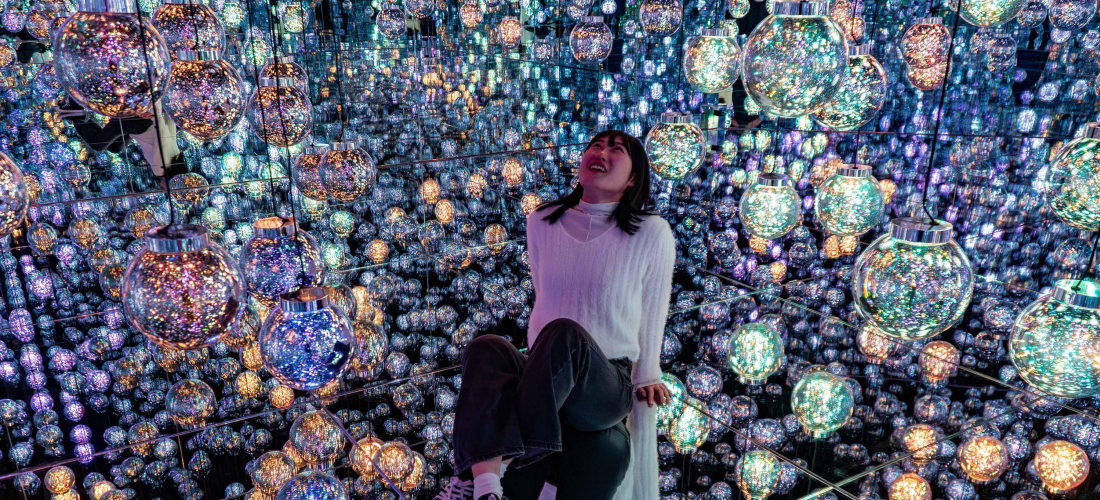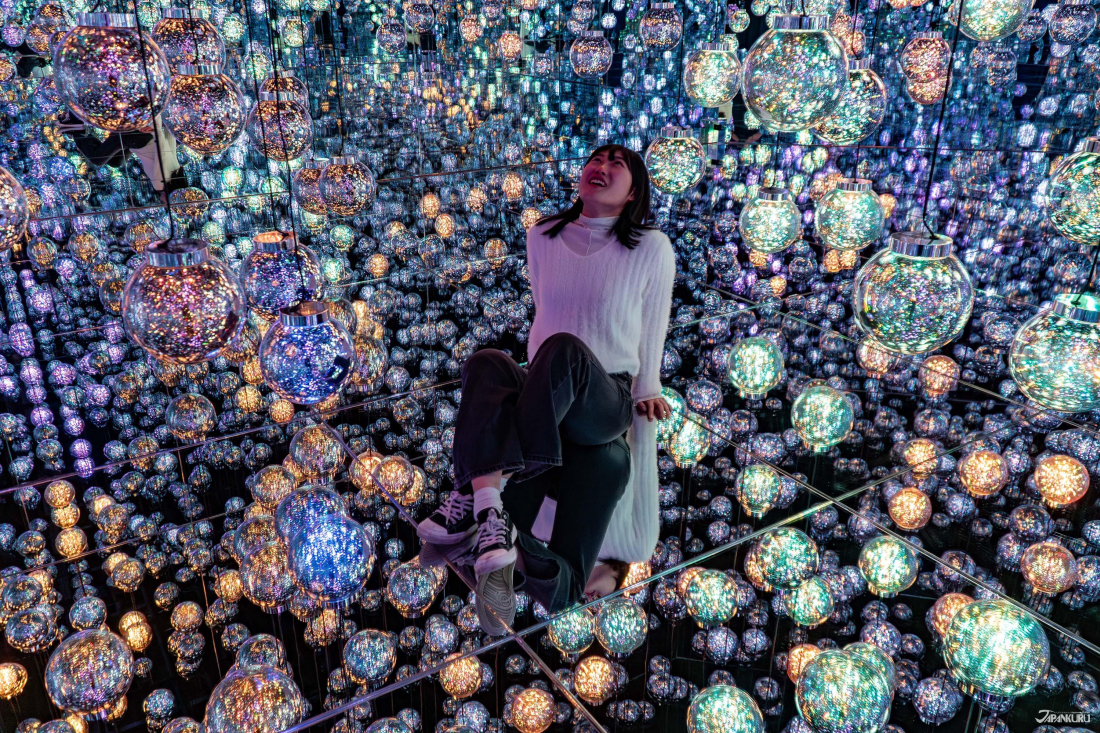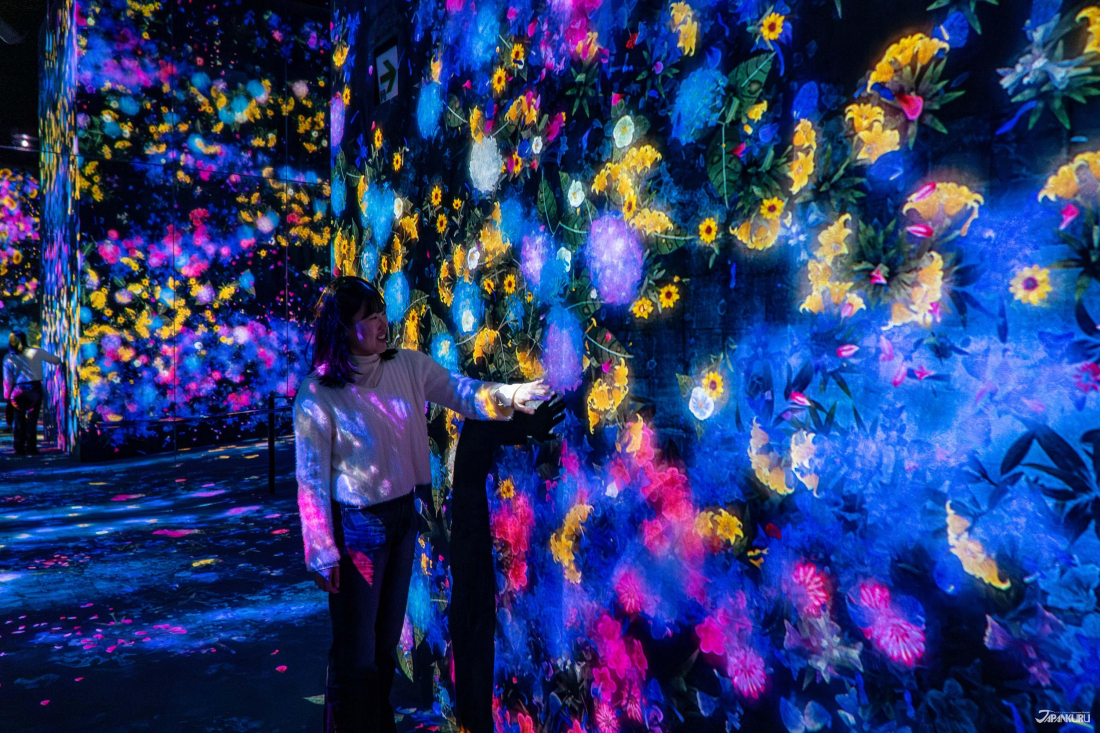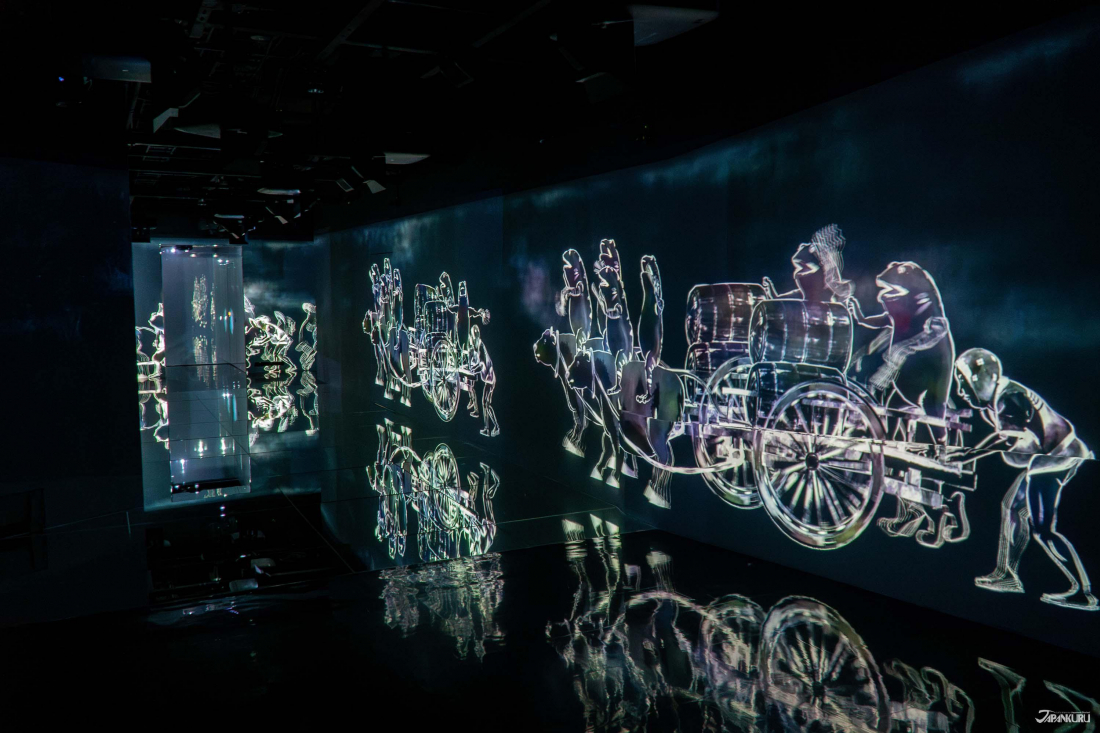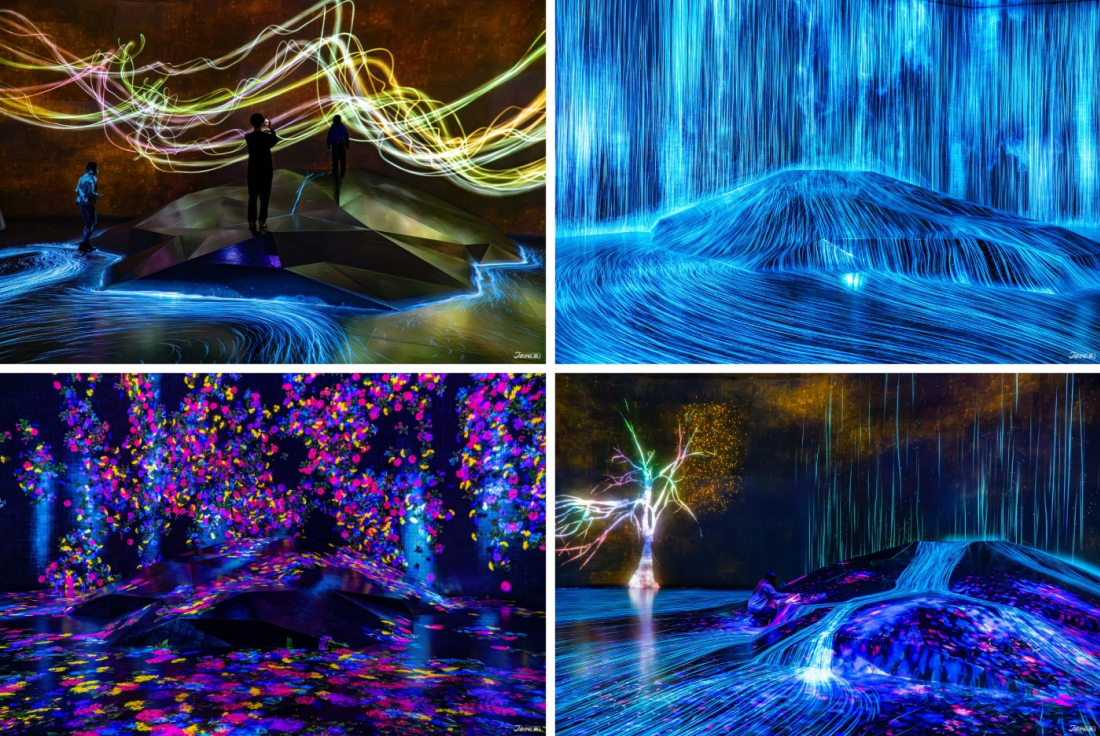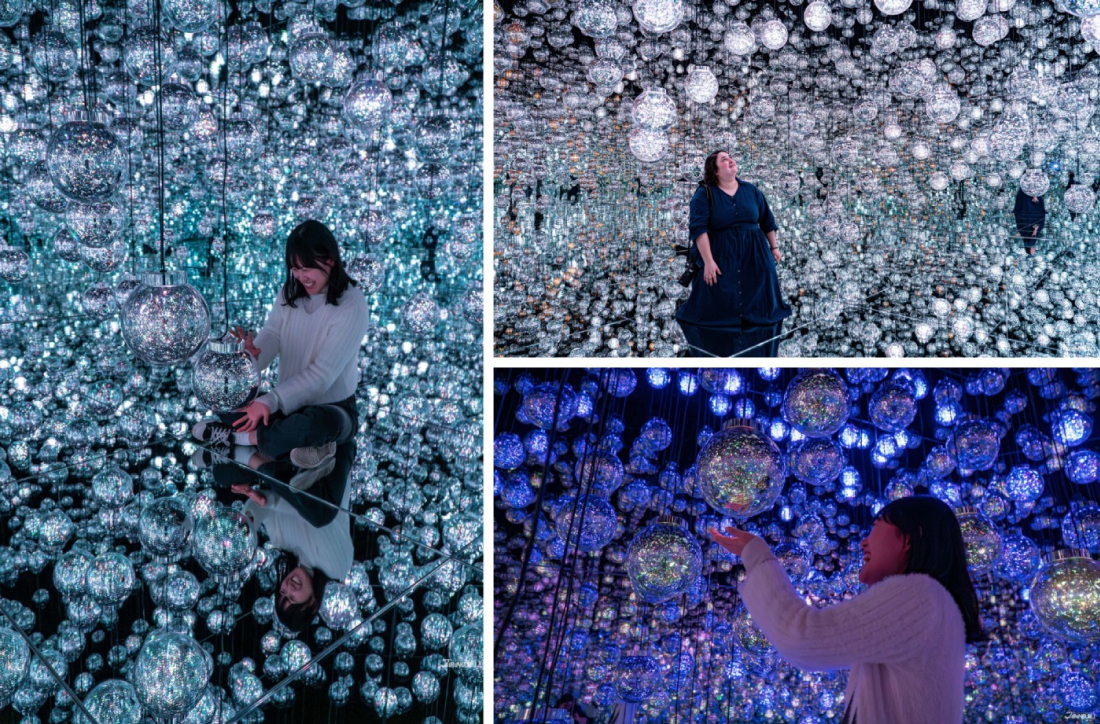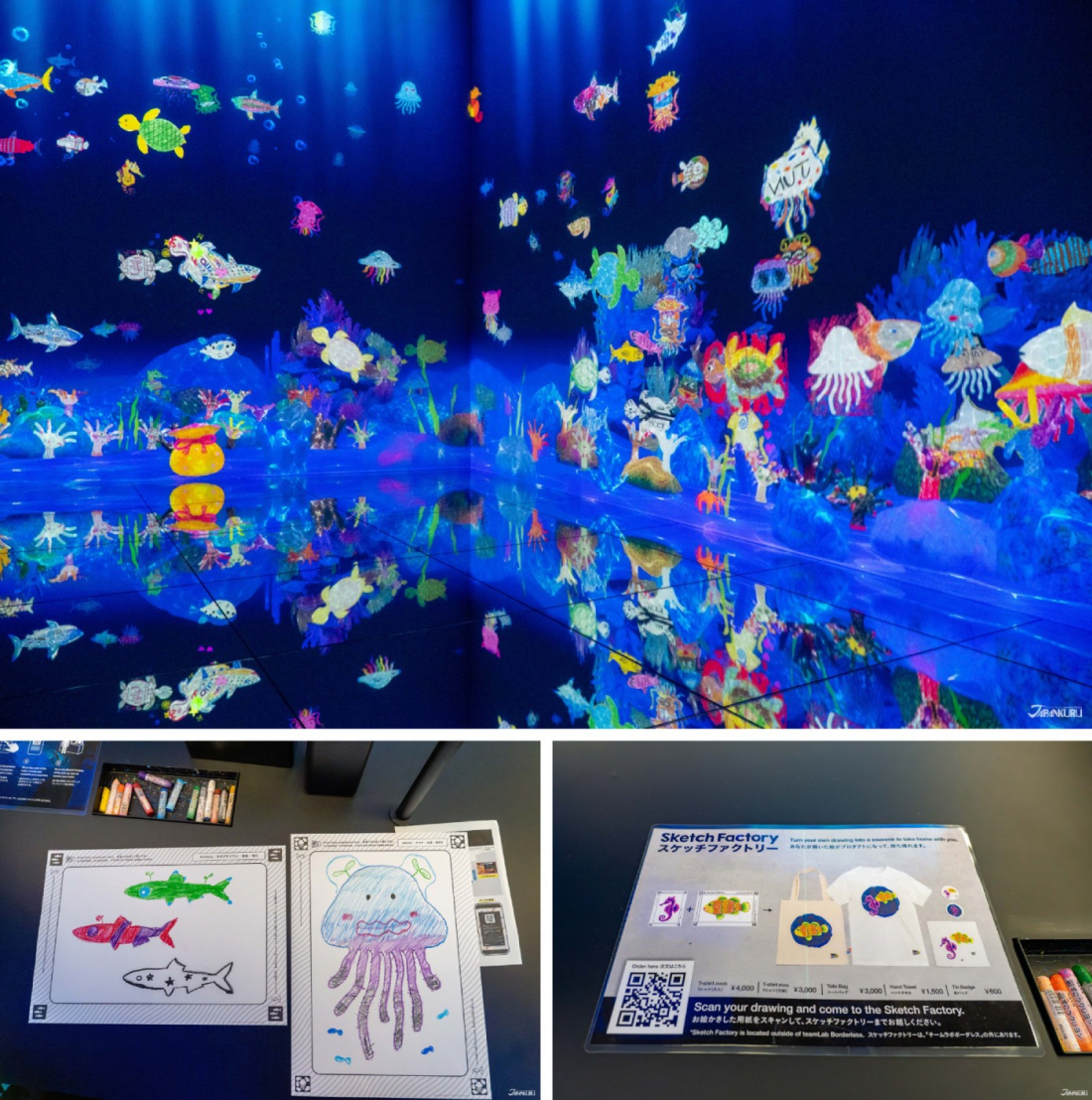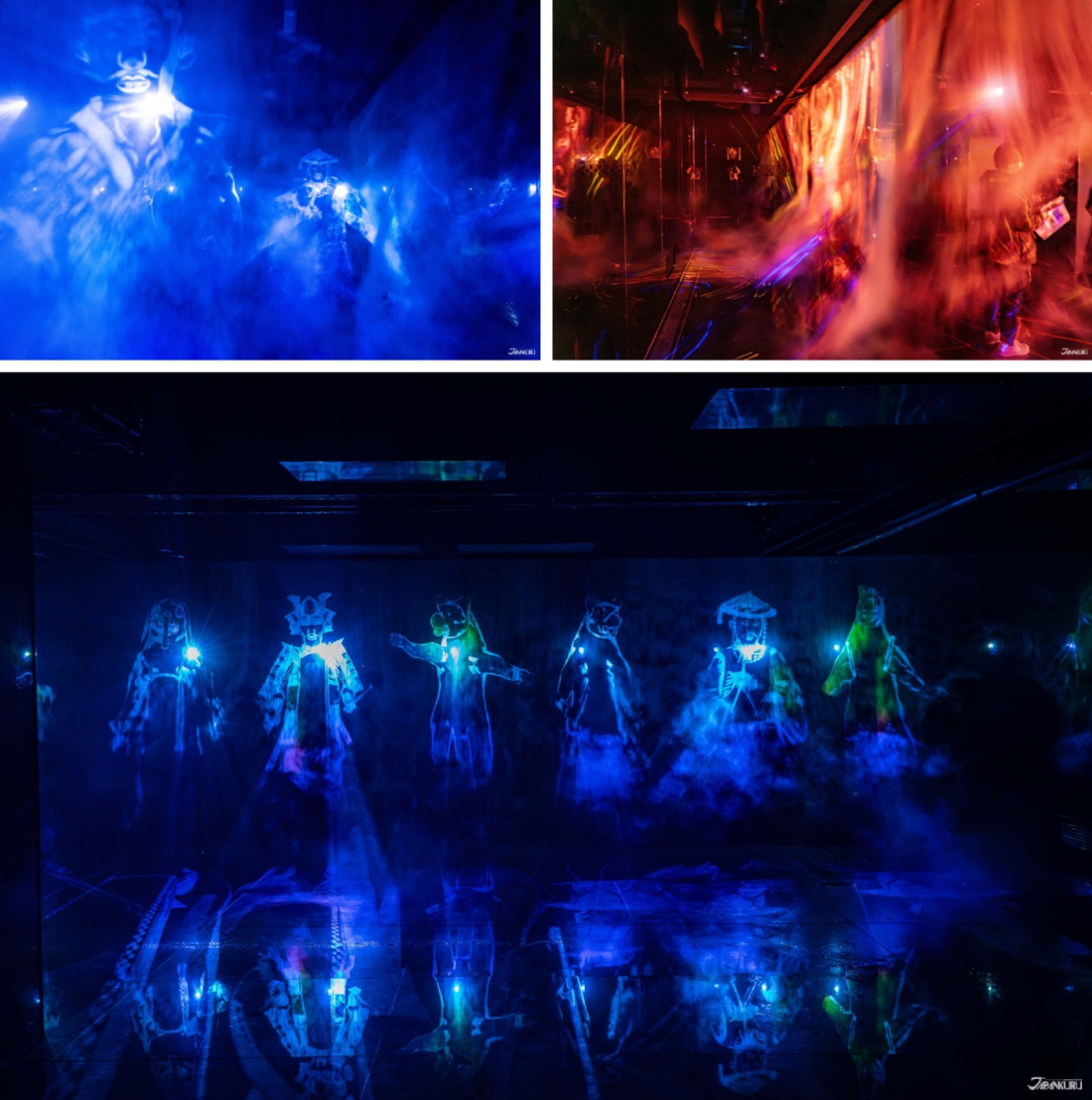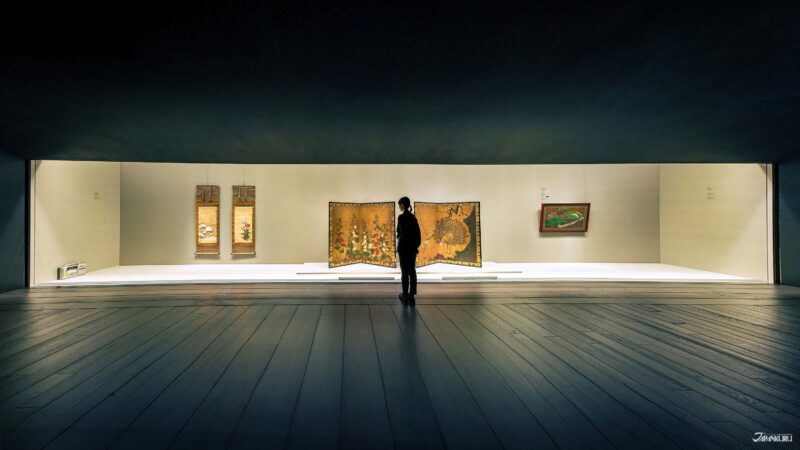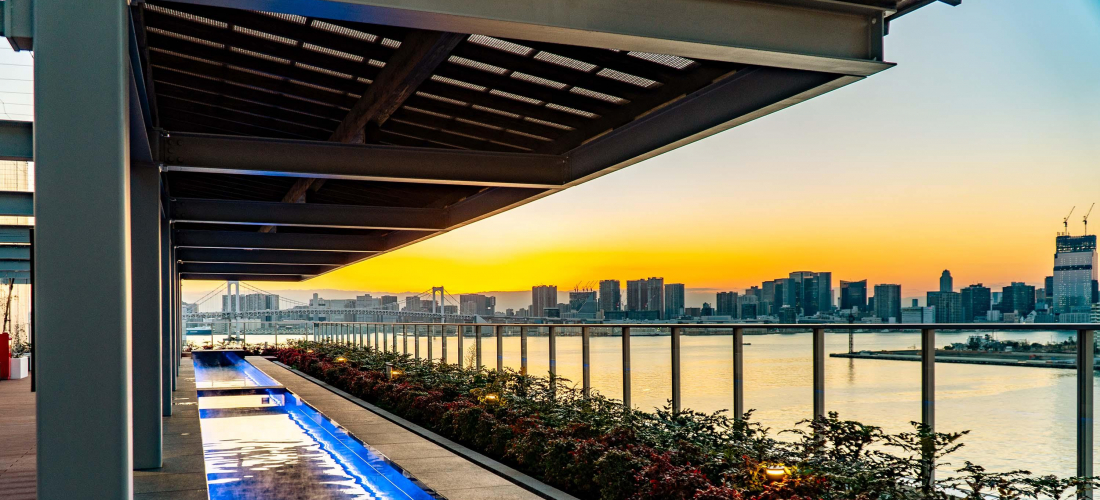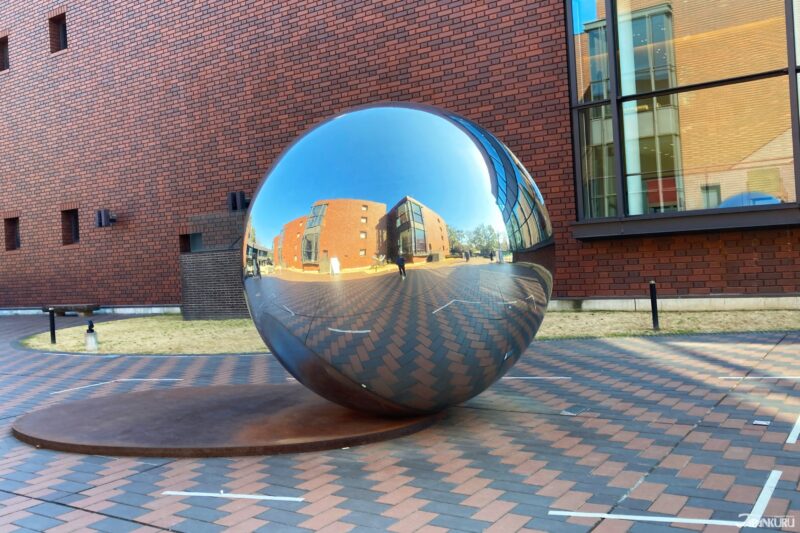CONTENTS
Find otherworldly visual experiences and unbelievable installation art at the new TeamLab Borderless in Azabudai Hills, the freshest new must-see attraction in Tokyo.
TeamLab Borderless: Tokyo’s Biggest New Attraction of 2024
The biggest new 2024 destination in Tokyo, or just the biggest comeback? Opening February 9, 2024, TeamLab Borderless: Mori Building Digital Art Museum is the second attempt at a permanent digital art museum from the creative art collective TeamLab (stylized as teamLab), and it's a reincarnation of the immensely popular TeamLab Borderless once found in Odaiba, but the team behind this new facility definitely did not just hit "copy-paste." Now located in the basement of the recently-opened Azabudai Hills shopping and entertainment complex in the heart of Tokyo, the new TeamLab Borderless has combined some of the old favorites of its predecessor with a lot of fresh innovation, to create a world of experiential interactive installation art that we suspect will be wowing visitors for years to come. (And will undoubtedly soon become the default profile picture backdrop for Tokyo's younger crowd.) With breathtaking visuals, constantly changing scenery, a good dose of hands-on participation, and a "borderless" concept that connects it to the rest of the world, we recommend TeamLab Borderless for anyone who might enjoy a beautiful and otherworldly digital escape from the bustling Tokyo life just outside.
TeamLab Borderless: Mori Building Digital Art Museum (森ビル デジタルアート ミュージアム:エプソン チームラボボーダレス)
Azabudai Hills B1F, 1-2-4 Azabudai, Minato City, Tokyo
Hours: 10:00 – 21:00 (closed first and third Tuesdays of every month)
Tickets: adults: 3,800 ~ 4,800 yen | children: up to 2,800 yen | visitors with disabilities: 1,900 yen and up
Official Website (en)
What’s TeamLab Borderless All About?
What does the word "borderless" mean to the creative team behind TeamLab? Exploring their new digital art museum will certainly give you an idea of how far they take the concept, not only blowing past the borders of an individual framed work, but past the physical borders of a room or a hallway, and even past the borders that mark one country or culture from another. From the moment you walk into this new facility, rooms and artistic concepts blend together and physically flow between spaces, creating an experience that is visually spectacular but almost overwhelming. While some individual works of installation art or visual motifs are limited to one area or another, many of the TeamLab artworks on display actually move like waves throughout the rooms and hallways: a flock of white crows trailing neon streaks, or a procession of humans and animals illustrated in the style of traditional Japanese art, parading past along the walls and accompanied by majestic melodies. Sometimes the different themes present themselves in new and unique ways depending on the form of the room they enter, and sometimes they are literally connected (through virtual means) to other TeamLab spaces around the world. Also: it feels like almost everything is interactive. As a thoroughly visual space, this museum doesn't lend itself to verbal or literary description – you'll probably want to see it for yourself.
TeamLab Borderless FAQs
① TeamLab Borderless or TeamLab Planets, which is better?
There are two large-scale TeamLab facilities in Tokyo, and each of them has unique points to recommend it over the other. TeamLab Planets is the smaller of the two, but each of the rooms is a little more tactile and experiential, with squishy cushion floors and a knee-high "koi pond" you wade your way through. At Borderless, there's not as much to touch (except for the walls, which you can touch a lot), so it's a little more of a visual experience, but the maze-like arrangement and the visuals can certainly be breathtaking. Which sounds better? Read our TeamLab Borderless vs Planets comparison to figure out which one you might prefer.
② Is TeamLab Borderless good for families/little kids?
As a family experience, it's definitely fun to see everything together. For families with slightly older kids we can wholeheartedly recommend the place. For younger children there are no real physical barriers (unlike Planets with its knee-high water), but you might want to consider your child's personality a little. At times you're pretty much walking through pitch-black hallways, and then riots of noise and bright flashing lights come out of nowhere. Maybe not ideal for all small children.
③ Do you need to worry about clothing choices at TeamLab Borderless?
At TeamLab Borderless your shoes stay on and there's no water to walk through, but there are a few rooms with mirrored floors, so they recommend you avoid short skirts.
④ How do you get tickets for TeamLab Borderless, and do you need to get them in advance?
There are a few places selling tickets, but the easiest place to get TeamLab Borderless tickets is just through the TeamLab website here. You absolutely should get your tickets in advance if possible, as dates do sometimes sell out (and popular times often do), but you might be able to buy them day-of if you're lucky. Prices vary depending on the date (3,800 to 4,800 yen for adults) – you can check the calendar on the ticket page for exact prices!
⑤ How do you get to TeamLab Borderless? Is it hard to find?
Unfortunately, the signage around Azabudai Hills shopping complex is a little abysmal, so TeamLab Borderless is kind of difficult to locate, even though it really shouldn't be. The entrance is on the B1 floor, which means it's actually directly connected to Kamiyacho Station. It really should be easy to make your way there, since it's just a couple minutes' walk from the Hibiya Line train station. But instead of using big flashy signs for TeamLab, all of the little signs say "Digital Art Museum" in small lettering. Yes, that's TeamLab. Follow the Digital Art Museum signs, stay on the B1 floor, and you will find your way there. Conveniently, you never have to go outside (although the signs might suggest you do?), which is nice on days with bad weather.
TeamLab Borderless Highlights
“A Rock Where People Gather”
It's hard to choose just a few highlights across the sprawling corridors of TeamLab Borderless, but one obvious landmark worth noting is a sort of central room that was also found in the previous Odaiba museum. With every inch of the walls and floor being used as a canvas for projection-mapped interactive art, and "flowing water" made of light chasing the footsteps of visitors passing through. Many of the museum's different artworks sweep their way through the enormous room and the atmosphere is always changing, and we haven't even gotten to the room's main attraction: a mountain-like boulder built into the curve of the wall, which functions as an integral part of light shows.
Bubble Universe
This isolated room is a TeamLab classic: the kind of space that lets each visitor feel like they've entered their own little world of glowing magic lanterns, more like something in a fairytale than real life. The glowing orbs flash and dim in a range of colors, and the clever placement actually makes it so that even a crowd of people can enter the room without feeling like they're constantly in each other's photos – vital at TeamLab, where photo-taking is usually priority #1.
Sketch Ocean & the Sketch Factory
Renditions of Sketch Ocean (or similar works) can actually be found in TeamLab installations around the world, but that certainly doesn't take away from the fun. This is as hands-on as it gets! Visitors color in their own sea creatures using one of a dozen or so different templates, and these hand-drawn works of art are scanned into the ocean that covers the walls in a neighboring room. Almost immediately, newly-scanned creatures begin swimming through the digital waters, mingling with the drawings of other TeamLab Borderless visitors, and even some out-of-town visitors originally scribbled at other TeamLab locations!
What's new here is the Sketch Factory. After a sea creature is scanned into the system, visitors can go online and find a cleaned-up version of their work, which can then be printed onto a handful of different souvenir items at the Sketch Factory after leaving the museum. Current merchandise options are t-shirts, tote bags, hand towels, and tin badges, which range from 600 to 4,000 yen, and can all be produced in 20 minutes or less (although wait times will of course depend on pending orders). It's a pretty cool little memento of a totally unique museum experience.
Universe of Fire Particles Dissolving
In this room, we're back to peak TeamLab intensity, thanks to the curtains of falling mist sweeping through a dark room, all used as screens for a number of different works of art. When the Japankuru team visited, the steamy room first hosted a swarm of rainbow butterflies made of light, and then later welcomed a band of ancient musicians.
En Tea House
This dim, quiet tea room is a break from the noise and flashing lights of other spaces, but it's just as magical. The menu includes a variety of tea-based drinks, from simple cold brew green tea to fancy roasted green tea chamomile rice milk lattes, plus a rich green tea gelato, and everything we tried was satisfyingly tasty, but it's definitely more about the experience. Each party is taken to sit at one of a few long counters topped with a tatami-mat-like texture, and the seats stay entirely dark until orders begin to arrive. A combination of sensors and elegant art allows projected flowers to bloom atop tea bowls filled with tea, and nowhere else. Move your bowl, and the old flower will begin to disintegrate, while a new one appears atop the surface of the tea. Similarly, branches of green tea leaves sprout from the small dishes of green tea gelato. When the tea and gelato are gone, so are the botanical projections, like magic!
Check Out the Newest from TeamLab
TeamLab Borderless is sure to be one of Tokyo's most popular attractions from the day it opens its doors. But luckily, it's a pretty big space that can hold a lot of people, and tickets don't seem to be selling out like they did back in Odaiba. If you like interactive digital art and taking gorgeous pictures, grab a ticket, and check out TeamLab Borderless next time you're in Tokyo!
For more info and updates from Japan, check Japankuru for new articles, and don't forget to follow us on X (Twitter), Instagram, and Facebook!
COMMENT
FEATURED MEDIA
VIEW MORE 
A New Tokyo Animal Destination: Relax & Learn About the World’s Animals in Japan
#pr #japankuru #anitouch #anitouchtokyodome #capybara #capybaracafe #animalcafe #tokyotrip #japantrip #카피바라 #애니터치 #아이와가볼만한곳 #도쿄여행 #가족여행 #東京旅遊 #東京親子景點 #日本動物互動體驗 #水豚泡澡 #東京巨蛋城 #เที่ยวญี่ปุ่น2025 #ที่เที่ยวครอบครัว #สวนสัตว์ในร่ม #TokyoDomeCity #anitouchtokyodome

Shohei Ohtani Collab Developed Products & Other Japanese Drugstore Recommendations From Kowa
#pr #japankuru
#kowa #syncronkowa #japanshopping #preworkout #postworkout #tokyoshopping #japantrip #일본쇼핑 #일본이온음료 #오타니 #오타니쇼헤이 #코와 #興和 #日本必買 #日本旅遊 #運動補充能量 #運動飲品 #ช้อปปิ้งญี่ปุ่น #เครื่องดื่มออกกำลังกาย #นักกีฬา #ผลิตภัณฑ์ญี่ปุ่น #อาหารเสริมญี่ปุ่น

도쿄 근교 당일치기 여행 추천! 작은 에도라 불리는 ‘가와고에’
세이부 ‘가와고에 패스(디지털)’ 하나면 편리하게 이동 + 가성비까지 완벽하게! 필름카메라 감성 가득한 레트로 거리 길거리 먹방부터 귀여움 끝판왕 핫플&포토 스폿까지 총집합!
Looking for day trips from Tokyo? Try Kawagoe, AKA Little Edo!
Use the SEIBU KAWAGOE PASS (Digital) for easy, affordable transportation!
Check out the historic streets of Kawagoe for some great street food and plenty of picturesque retro photo ops.
#pr #japankuru #도쿄근교여행 #가와고에 #가와고에패스 #세이부패스 #기모노체험 #가와고에여행 #도쿄여행코스 #도쿄근교당일치기 #세이부가와고에패스
#tokyotrip #kawagoe #tokyodaytrip #seibukawagoepass #kimono #japantrip

Hirakata Park, Osaka: Enjoy the Classic Japanese Theme Park Experience!
#pr #japankuru #hirakatapark #amusementpark #japantrip #osakatrip #familytrip #rollercoaster #retrôvibes #枚方公園 #大阪旅遊 #關西私房景點 #日本親子旅行 #日本遊樂園 #木造雲霄飛車 #히라카타파크 #สวนสนุกฮิราคาตะพาร์ค

🍵Love Matcha? Upgrade Your Matcha Experience With Tsujiri!
・160년 전통 일본 말차 브랜드 츠지리에서 말차 덕후들이 픽한 인기템만 골라봤어요
・抹茶控的天堂!甜點、餅乾、飲品一次滿足,連伴手禮都幫你列好清單了
・ส่องมัทฉะสุดฮิต พร้อมพาเที่ยวร้านดังในอุจิ เกียวโต
#pr #japankuru #matcha #matchalover #uji #kyoto #japantrip #ujimatcha #matchalatte #matchasweets #tsujiri #말차 #말차덕후 #츠지리 #교토여행 #말차라떼 #辻利抹茶 #抹茶控 #日本抹茶 #宇治 #宇治抹茶 #日本伴手禮 #抹茶拿鐵 #抹茶甜點 #มัทฉะ #ของฝากญี่ปุ่น #ชาเขียวญี่ปุ่น #ซึจิริ #เกียวโต

・What Is Nenaito? And How Does This Sleep Care Supplement Work?
・你的睡眠保健品——認識「睡眠茶氨酸錠」
・수면 케어 서플리먼트 ‘네나이토’란?
・ผลิตภัณฑ์เสริมอาหารดูแลการนอน “Nenaito(ネナイト)” คืออะไร?
#pr #japankuru #sleepcare #japanshopping #nenaito #sleepsupplement #asahi #睡眠茶氨酸錠 #睡眠保健 #朝日 #l茶胺酸 #日本藥妝 #日本必買 #일본쇼핑 #수면 #건강하자 #네나이토 #일본영양제 #อาหารเสริมญี่ปุ่น #ช้อปปิ้งญี่ปุ่น #ร้านขายยาญี่ปุ่น #ดูแลตัวเองก่อนนอน #อาซาฮิ

Japanese Drugstore Must-Buys! Essential Items from Hisamitsu® Pharmaceutical
#PR #japankuru #hisamitsu #salonpas #feitas #hisamitsupharmaceutical #japanshopping #tokyoshopping #traveltips #japanhaul #japantrip #japantravel

Whether you grew up with Dragon Ball or you just fell in love with Dragon Ball DAIMA, you'll like the newest JINS collab. Shop this limited-edition Dragon Ball accessory collection to find some of the best Dragon Ball merchandise in Japan!
>> Find out more at Japankuru.com! (link in bio)
#japankuru #dragonball #dragonballdaima #animecollab #japanshopping #jins #japaneseglasses #japantravel #animemerch #pr

This month, Japankuru teamed up with @official_korekoko to invite three influencers (originally from Thailand, China, and Taiwan) on a trip to Yokohama. Check out the article (in Chinese) on Japankuru.com for all of their travel tips and photography hints - and look forward to more cool collaborations coming soon!
【橫濱夜散策 x 教你怎麼拍出網美照 📸✨】
每次來日本玩,是不是都會先找旅日網紅的推薦清單?
這次,我們邀請擁有日本豐富旅遊經驗的🇹🇭泰國、🇨🇳中國、🇹🇼台灣網紅,帶你走進夜晚的橫濱!從玩樂路線到拍照技巧,教你怎麼拍出最美的夜景照。那些熟悉的景點,換個視角說不定會有新發現~快跟他們一起出發吧!
#japankuru #橫濱紅磚倉庫 #汽車道 #中華街 #yokohama #japankuru #橫濱紅磚倉庫 #汽車道 #中華街 #yokohama #yokohamaredbrickwarehouse #yokohamachinatown

If you’re a fan of Vivienne Westwood's Japanese designs, and you’re looking forward to shopping in Harajuku this summer, we’ve got important news for you. Vivienne Westwood RED LABEL Laforet Harajuku is now closed for renovations - but the grand reopening is scheduled for July!
>> Find out more at Japankuru.com! (link in bio)
#japankuru #viviennewestwood #harajuku #omotesando #viviennewestwoodredlabel #viviennewestwoodjapan #비비안웨스트우드 #오모테산도 #하라주쿠 #日本購物 #薇薇安魏斯伍德 #日本時尚 #原宿 #表參道 #japantrip #japanshopping #pr

Ready to see TeamLab in Kyoto!? At TeamLab Biovortex Kyoto, the collective is taking their acclaimed immersive art and bringing it to Japan's ancient capital. We can't wait to see it for ourselves this autumn!
>> Find out more at Japankuru.com! (link in bio)
#japankuru #teamlab #teamlabbiovortex #kyoto #kyototrip #japantravel #artnews
Photos courtesy of teamLab, Exhibition view of teamLab Biovortex Kyoto, 2025, Kyoto ® teamLab, courtesy Pace Gallery

Japanese Makeup Shopping • A Trip to Kamakura & Enoshima With Canmake’s Cool-Toned Summer Makeup
#pr #canmake #enoshima #enoden #에노시마 #캔메이크 #japanesemakeup #japanesecosmetics

⚔️The Robot Restaurant is gone, but the Samurai Restaurant is here to take its place. Check it out, and don't forget your coupon!
🍣신주쿠의 명소 로봇 레스토랑이 사무라이 레스토랑으로 부활! 절찬 쿠폰 발급중
💃18歲以上才能入場的歌舞秀,和你想的不一樣!拿好優惠券去看看~
#tokyo #shinjuku #samurairestaurant #robotrestaurant #tokyotrip #도쿄여행 #신주쿠 #사무라이레스토랑 #이색체험 #할인이벤트 #歌舞伎町 #東京景點 #武士餐廳 #日本表演 #日本文化體驗 #japankuru #japantrip #japantravel #japanlovers #japan_of_insta

Japanese appliance & electronics shopping with our KOJIMA x BicCamera coupon!
用JAPANKURU的KOJIMA x BicCamera優惠券買這些正好❤️
코지마 x 빅 카메라 쿠폰으로 일본 가전 제품 쇼핑하기
#pr #japankuru #japanshopping #kojima #biccamera #japaneseskincare #yaman #dji #osmopocket3 #skincaredevice #日本購物 #美容儀 #相機 #雅萌 #日本家電 #일본여행 #면세 #여행꿀팁 #일본쇼핑리스트 #쿠폰 #일본쇼핑 #일본브랜드 #할인 #코지마 #빅카메라 #japankurucoupon

